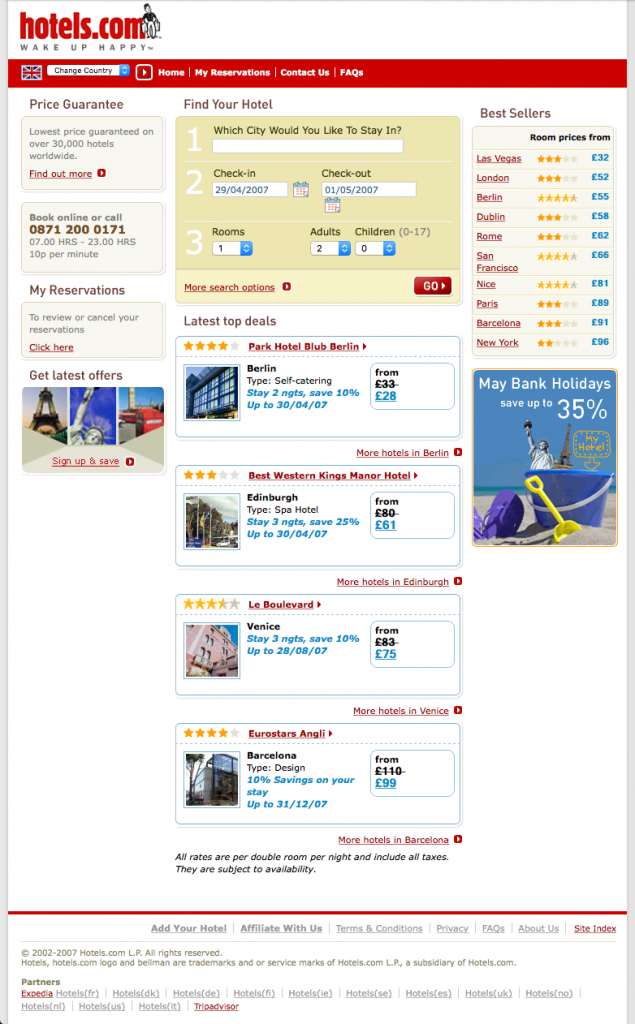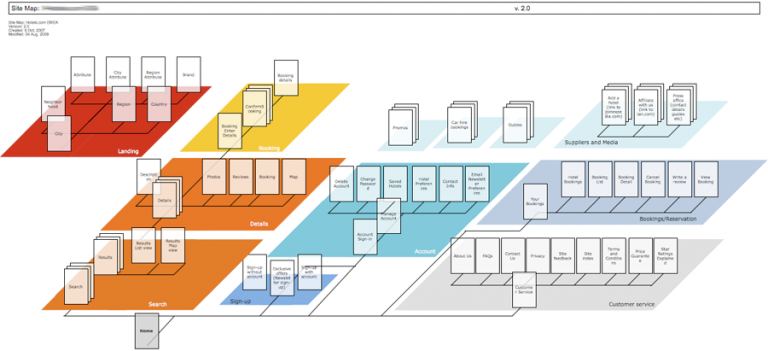
When I started as the Head of User Experience at Hotels.com EMEA in 2006, the UX team numbered two (out of a company of twenty), and sales were around $250M per annum. By the time I left in 2012, the UX team had grown to 27 members – researchers, designers, UI engineers and managers (out of a global team of 300), and sales of almost $5B. It was an amazing experience to take part in this journey.
I joined the team with the task of establishing the UX function. As part of that, I applied design to drive commercial success and evangelized customer-centricity throughout the company. I quickly worked to gain an understanding of who our customers were through user research, which, the learnings from, formed the basis of our personas and customer journeys. I also established a baseline for how well the site performed in terms of usability and looked for areas where it could be improved.
In my first three years, I was extremely hands-on and executed a significant amount of the UX and visual design (and even a bit of front-end mark-up). In my latter three years, my focus shifted towards strategy and team management.
During those six years, I was involved in two complete redesigns of the site, and our first attempts at solutions for mobile devices – first a mobile-friendly website, then mobile apps for iOS, Android, Windows Phone and Blackberry, and later apps for the iPad and Android tablets.

In addition, to support the growth of the business, I led the UX team through expansion from 10 to 80 points of sale, a global re-platform due to absorption of the North American business, and two brand identity changes.
While I am incredibly proud of the commercial success of the company, I am equally proud of the empathy we developed for our customers, and the insights that it led to. This understanding of our customers came through an extensive programme of qualitative research. We ran 70 different research projects during my time there in 20 countries – everything from shadowing customers around to remote unmoderated usability tests. All those findings led to the creation a research database, to make sure we didn’t lose any of that precious knowledge.

Another source of customer insight was the analysis of behaviour on the site and apps. Accompanying traditional site analytics, we ran a barrage of multivariate tests, which led to perpetual optimisation of the product.
On the UX side of things, I worked with my team to develop a great organisation and culture. We became more efficient by applying Agile principles and methodologies to our workflow. We held frequent collaborative design and innovation sessions. We built a solid foundation of tools including personas, customer journeys, a research database, a pattern library and a style guide to work from.

All in all, it was an incredibly rewarding experience, and when I left, I took away a few principles that have stayed with me since:
- While you can progress your business incrementally, you need to invest in looking for those game changers.
- Plans and vision are absolutely necessary
- Executing frequently and iteratively based on true insights from your customers, can yield great results
- Experimentation – in big and small ways, is key.
- People may try to make logical buying choices, but often don’t (heuristics affect our decisions probably a lot more than we realise).